

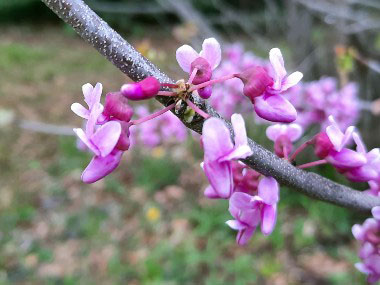
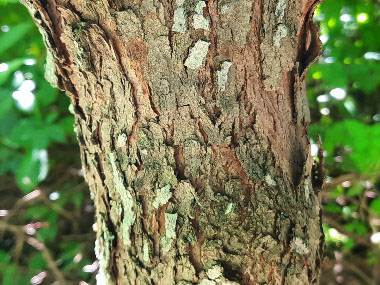
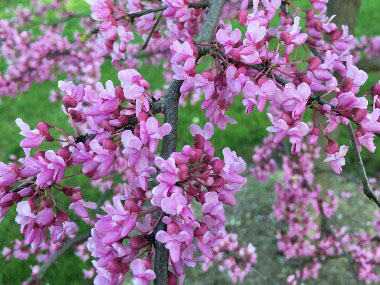
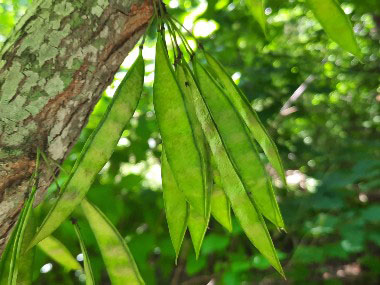
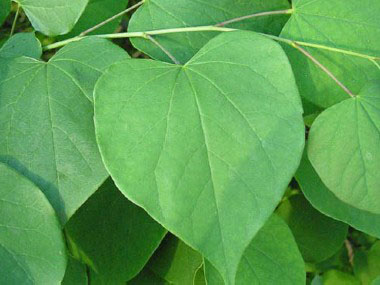
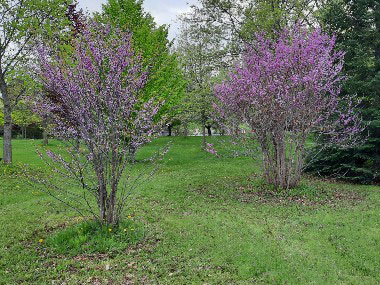
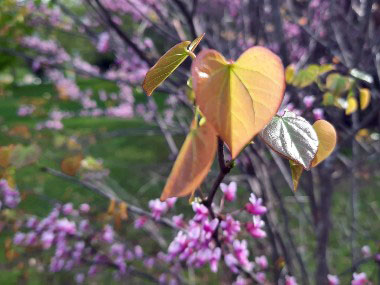
To support our efforts please browse our store (books with medicinal info, etc.).
Redbud trees are native across much of the continental U.S. and Canada, with Cercis canadensis (Eastern Redbud) being the most common species. Cercis occidentalis grows in western regions. Redbuds are small leguminous trees (or large shrubs) in the Fabaceae family. These trees are among the first to bloom in the spring and produce large numbers of multi-seeded pods in late summer. Eastern Redbud is the state tree of Oklahoma. Historically, Native Americans were reported to consume redbud flowers raw or boiled and consume seeds after roasting in the seedpods. Although this tree grows naturally, it is also a very popular ornamental tree as it is one of the first trees to bloom in spring.
Trunk/Bark
The young bark is thin, smooth and gray, becoming scaly as it ages. It also has a cinnamon-red inner bark. The trunk is usually short with spreading branches to form a broad rounded crown. It can also grow several trunks in multistemmed individuals.
Branches/Twigs
Twigs are usually zigzag and the bark on the twigs tends to be glossy brown.
Height
Eastern rudbuds can reach heights between 3.5 to 10m (12-30') under favourable conditions.
Leaves/Needles
Heart-shaped leaves grow alternate. Mature leaves reach widths between 7 and 12 cm (3-5") and they are usually glabrous. Leaves are somewhat purplish when very young, turning dark green when mature, and they become yellow in the autumn. The leaf petiole is long and slender.
Flowers
Flowers are purple-pink, pea-like, and appear before the leaves in April or May depending on location. Flower buds are round and borne in groups on stalks.
Fruit
Fruit is a short-stalked legume, flat, 5-10cm (2-4") long; about 1cm (1/2") wide; pointed on both ends and contains 8 to 12 seeds.
Habitat
Eastern redbuds are more often found in partial shady areas under other trees. Trees in sunny locations will have more compact, rounded canopys and tend to not do as well. Habitats include mesic deciduous woodlands, mixed rocky woodlands (deciduous & coniferous), wooded river valleys and riverbanks, wooded slopes and slopes of ravines, as well as in savannas and thickets.
Edible Parts
Flowers can be used raw as a garnish or they can be pickled. The flowers are rich in vitamin C and they have a high content of anthocyanins. Unopened buds can also be pickled or used as a caper. According to Brandeis University, the pods are good sautéed. Native Americans ate redbud flowers raw or cooked as well as the young pods and seeds raw or cooked. Seeds contain about 25% protein and 8% fat. A 2006 study show the flowers and the seeds to be very high in antioxidants. Green seeds have the essential fatty acids linoleic and alpha-linolenic acid, although alpha-linolenic acid is absent from mature dried seeds. Young leaves are also edible.
Other Name
Forest Pansy.
Recipes
Winter Survival Food Handbook

PDF Plant Magazines
Types of Wild Food
Geographic Zones Seasons
Disclaimer
EdibleWildFood.com is informational in nature. While we strive to be 100% accurate, it is solely up to the reader to ensure proper plant identification. Some wild plants are poisonous or can have serious adverse health effects.
We are not health professionals, medical doctors, nor are we nutritionists. It is up to the reader to verify nutritional information and health benefits with qualified professionals for all edible plants listed in this web site. Please click here for more information.
Why Edible Wild Food?
- Food costs are rising
- Free, wild food is readily abundant
- Wild food adds nutrition to your diet
- Wild food can help treat various medical conditions





